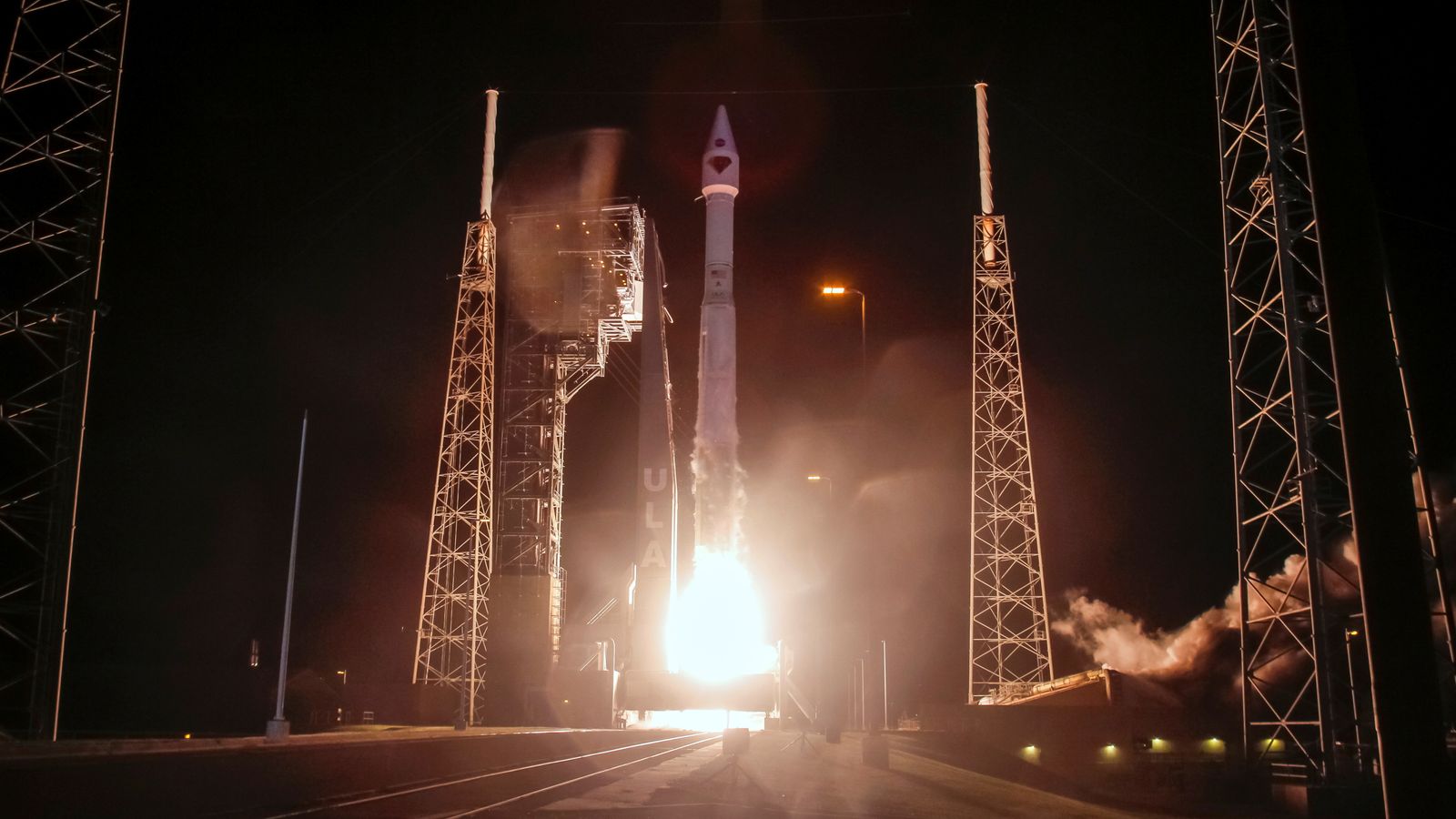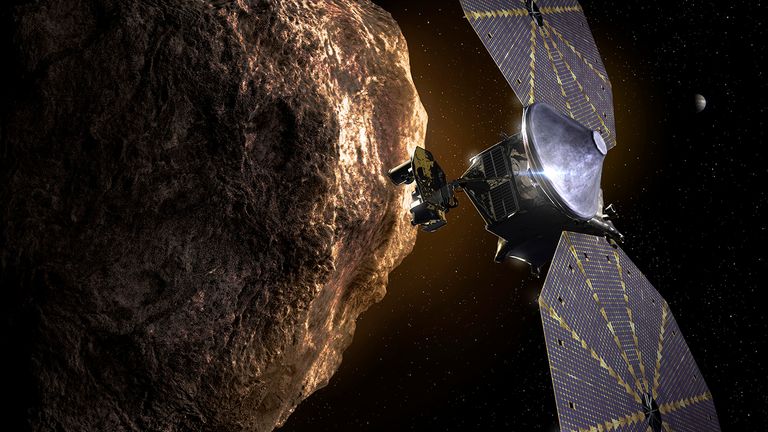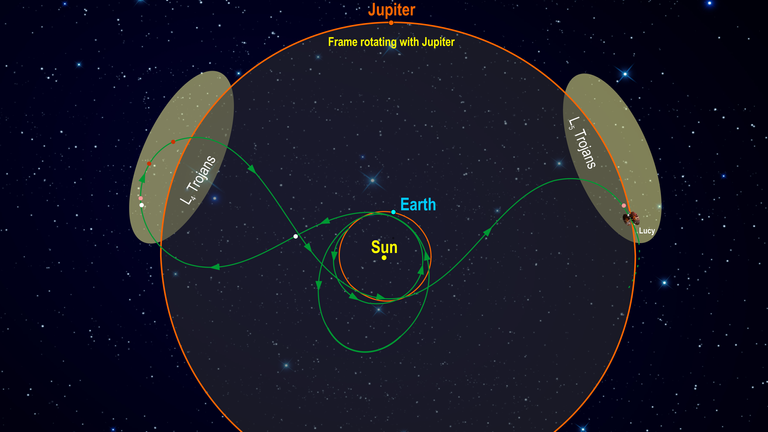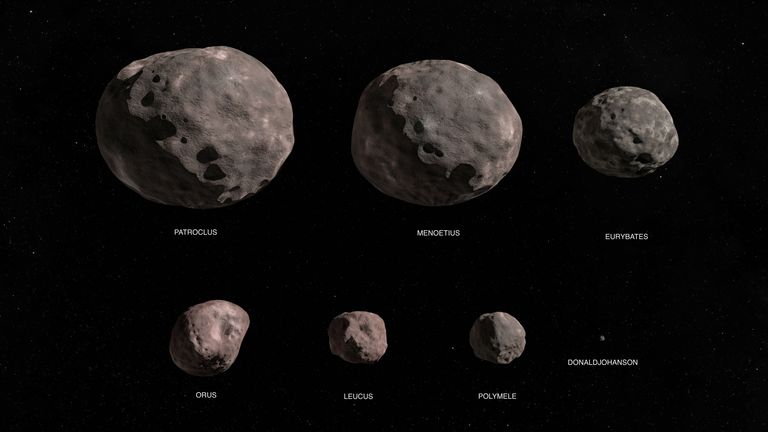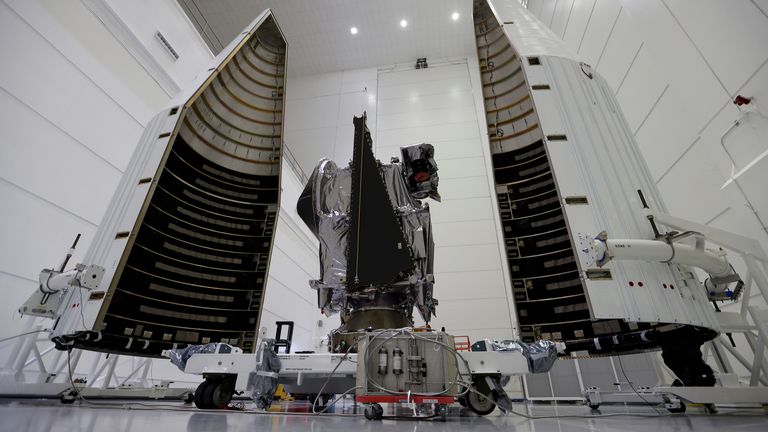NASA has launched a probe into space that will fly to a ‘swarm’ of asteroids orbiting the sun for the first time to look into the origins of the solar system.
The Lucy probe will explore one group of the little-known Trojan asteroids which follow roughly the same orbit of the sun as Jupiter, in the outer solar system.
The probe will then return to Earth again before using its gravity to reshoot to a different set of Trojans to continue its mission in another part of the solar system.
Although it won’t land back on Earth, it will be the first time any mission has returned to its home planet from the sun’s outer reaches.
It was launched on an Atlas V rocket made by the United Launch Alliance (UAL), a joint venture of Boeing and Lockheed Martin, that lifted off from Cape Canaveral Air Force Station in Florida at 10.34am UK time, (5.34am local time).
Ari Vogel, Lockheed Martin’s Deep Space Exploration Director, watched the launch and told NASA TV afterwards: “Incredible. Seeing it go across the clouds and brighten up the whole sky was just fantastic.”
It is hoped that, by exploring the Trojan asteroids, scientists will be able to glean previously unavailable evidence of how the planets were formed and how life might have begun.
NASA’s chief of science missions, Thomas Zurbuchen, said: “Each one of those asteroids we’re visiting tells our story… the story of us, the story of the solar system.”
The Lucy mission, named partly after The Beatles song Lucy In The Sky With Diamonds, is just the latest in a series of explorations into space this year to look at asteroids.
In around a month, a European Space Agency and NASA spacecraft named Dart will set off with the aim of catching up with a double-asteroid and ramming into its moonlet to change its course – a test that could one day save Earth from an incoming rock.
Next summer, another spacecraft will head to an asteroid believed to be made up of nickel and iron that might be the inside of a one-time planet.
And in 2023, a space capsule will return to Earth carrying the excavating robot Osiris-Rex which is bringing samples home from Bennu, a rubble and boulder-strewn rock that could endanger Earth in a couple of centuries time.
The 12-year Lucy expedition will study a record eight asteroids – seven in the Trojans and an asteroid in the solar system’s main asteroid belt, called DonaldJohanson.
DonaldJohanson is a 4km-wide asteroid made mostly of carbon compounds that was named after an American paleoanthropolologist who led the team that discovered bones from a human ancestor who came to be called Lucy, which the NASA mission is also named after.
The Trojans have been described as unexplored time capsules from the dawn of the solar system, or planetary “fossils”.
Because they were formed some 4.5 billion years ago, they are the remnants of the primordial dust which collected together to make the planets that are recognisable today. The Trojans are among the remaining ‘left-overs’ that did not bond together to form the planets
They are also believed to be rich in carbon compounds and as a result may provide new insights into the origin of organic materials and life on Earth, according to NASA.
Below their insulating blanket of dust, they are thought to be rich in water.
Among the instruments on board the $981m Lucy probe, which is more than 14 metres from end to end, is a disc made of lab-grown diamonds, as well as cameras capable to spotting valleys and mountains on their surface.
The spacecraft, most of which is made up of huge solar panels more than seven metres in diameter, will pass within 600 miles of each of its target asteroids, the biggest one of which is about 70 miles across.
